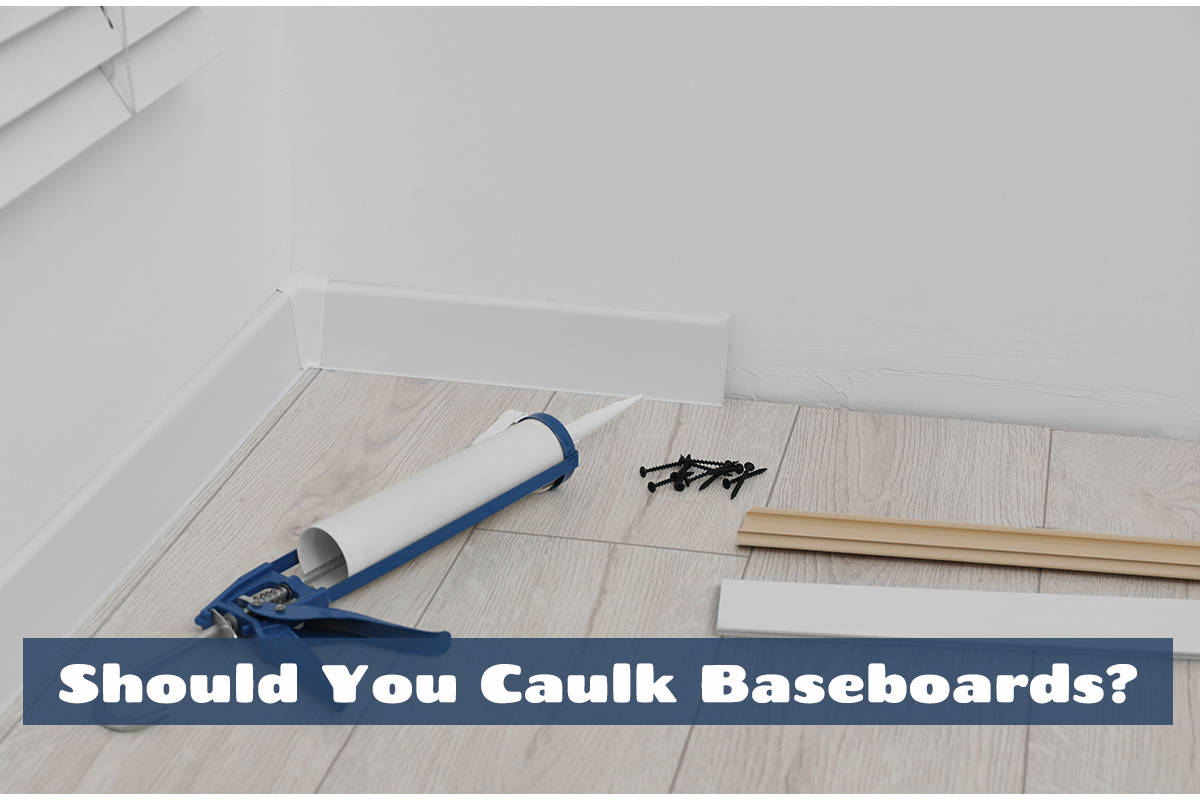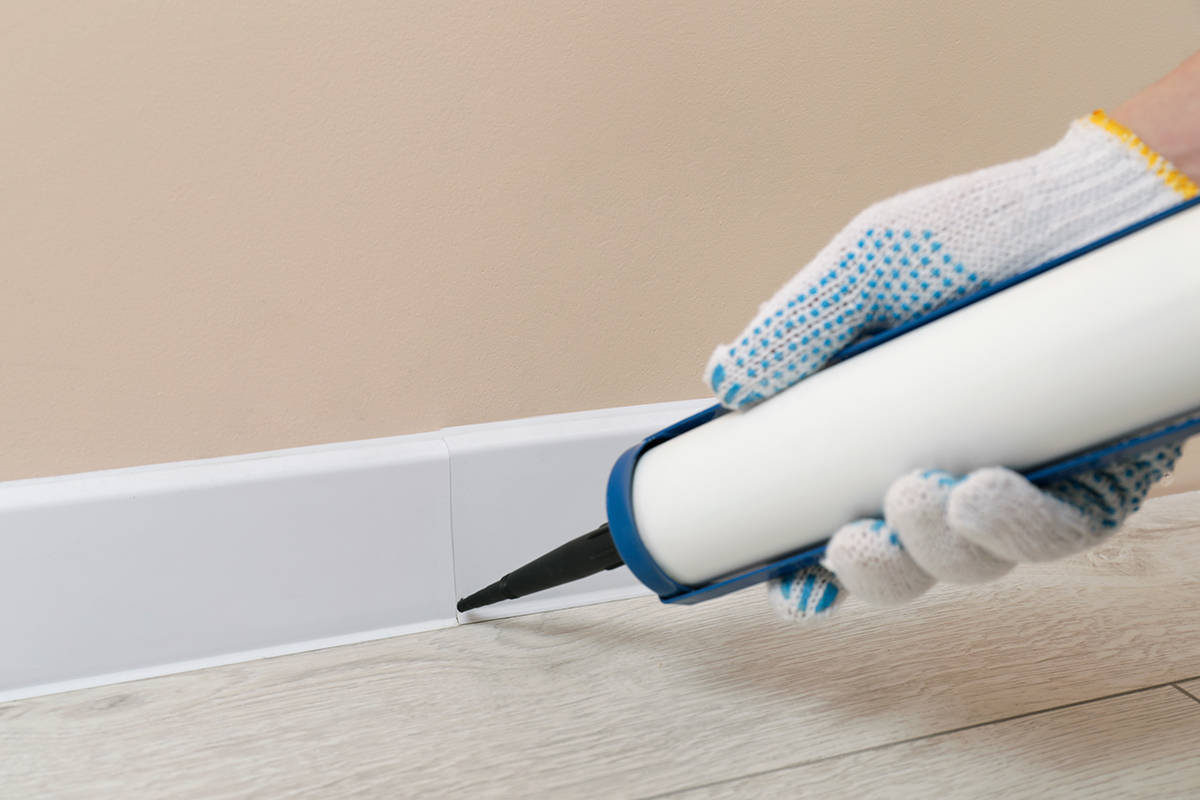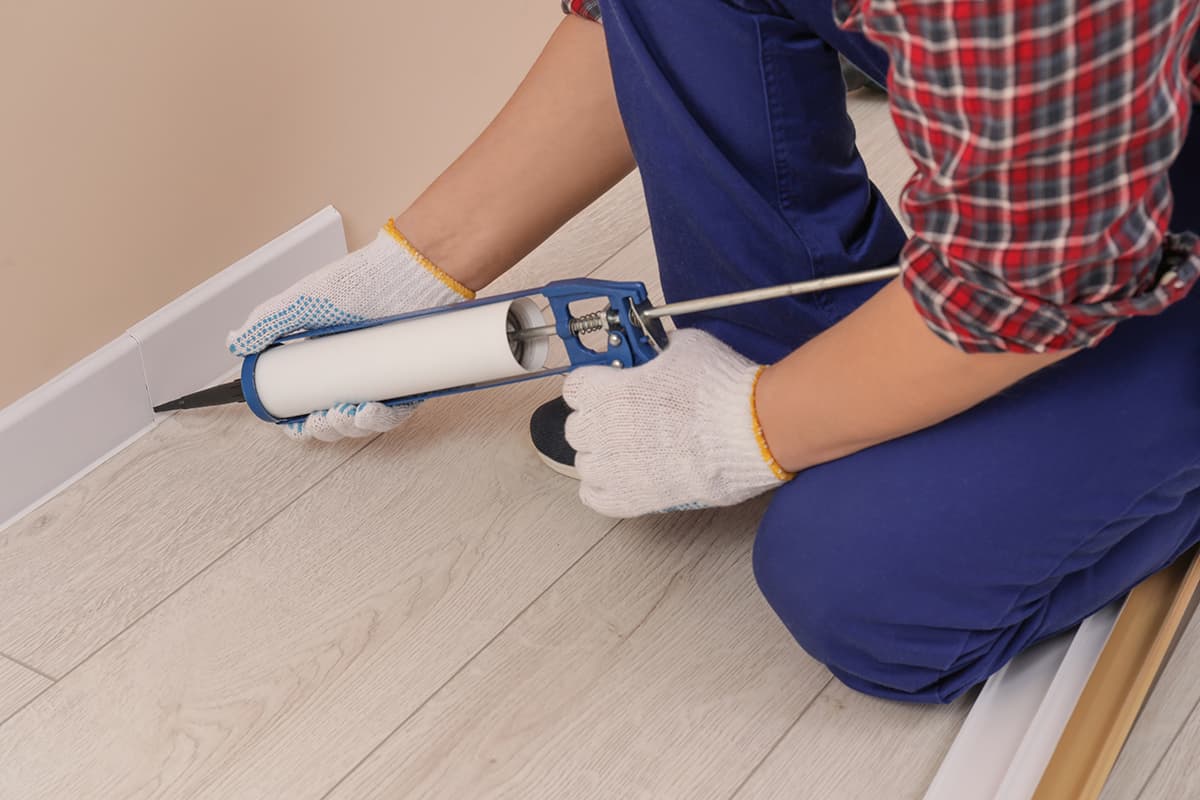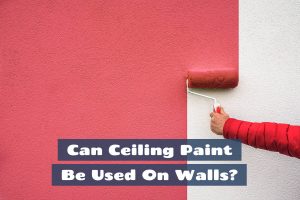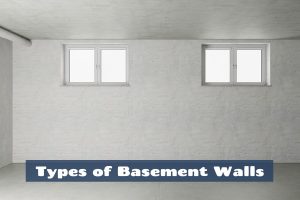Baseboards bridge the gap between walls and floors, fulfilling both an aesthetic and functional purpose. There are advantages and disadvantages to caulking baseboards, so it all comes down to personal choice.
This guide explores the most common pros and cons of caulking baseboards to help determine whether you should caulk this architectural feature in your home.
Pros and Cons of Caulking Baseboards
Pros
Seal Gaps
One of the primary benefits of caulking baseboards is that it helps seal gaps and cracks that can accumulate over time as a result of natural settling, temperature fluctuations, or wear and tear. Caulking can prevent dust, insects, and drafts from entering your living space through these openings.
Improve Aesthetic
Caulking baseboards can give your room a polished look by creating a seamless transition between the walls and floors.
Energy Efficiency
Caulking baseboards can seal gaps where draughts enter the home, so by sealing these gaps caulk can contribute to improved energy efficiency. The draught reduction can help maintain a more consistent indoor temperature, which in turn could reduce the cost of heating or cooling the home.
Prevent Mold
In areas prone to moisture, such as bathrooms and kitchens, caulking baseboards can act as a moisture barrier. If you don’t seal the gaps between the walls and the baseboards, moisture could seep into these gaps and mold can thrive. Caulking baseboards can help prevent water damage and the growth of mold and mildew.
Cons
Flexibility
Homes are subject to natural expansion and contraction due to changes in temperature and humidity. Caulking baseboards could limit this movement and potentially lead to cracks in the caulk itself or even the baseboards. Maintenance
Caulk can create a smooth appearance, but it can also accumulate dust and dirt over time. Cleaning caulked baseboards can be trickier than cleaning uncaulked ones, as improper cleaning techniques might damage the caulk or affect its appearance. If you want a low-maintenance cleaning routine, then caulking baseboards might be counterintuitive.
Skill and Time
Properly caulking baseboards requires skill and attention to detail. If you are not experienced in DIY and don’t want the expense of paying a contractor to caulk your baseboards, then it might be best to leave this project alone.
Best Caulk for Baseboards
If you’ve decided to go ahead and caulk your baseboards, you’ll now need to determine which is the best type of caulk for the job.
Acrylic Latex Caulk
Acrylic latex caulk is one of the most popular choices for caulking baseboards because it is easy to work with, adheres well to most surfaces, and is paintable. Acrylic caulk also has some flexibility, so it will be able to withstand the normal minor expansion or retraction that happens in homes, without causing cracking.
Silicone Caulk
Silicone caulk is extremely durable and water-resistant. If you’re caulking baseboards in rooms like bathrooms or kitchens, that tend to be high in humidity or moisture, silicone caulk will help to prevent moisture penetration. The main drawback of silicone caulk is that it is not as easy to paint over as acrylic latex caulk.
Hybrid Caulk
Hybrid caulks combine the properties of different caulk types, typically with a mixture of silicone and acrylic latex. Hybrid caulk offers the flexibility of acrylic latex and the durability of silicone to give the user the best of both worlds. They can be used in various environments and provide a strong bond and good resistance to moisture, with the added bonus that they can be painted over. Hybrid caulks have a matt finish, and are considered to be easy to use.
Polyurethane Caulk
Polyurethane caulk is incredibly flexible and can handle significant movement without cracking. It’s a good choice if your home experiences a lot of temperature and humidity fluctuations and expands or contracts as a result. However, polyurethane caulk can be more challenging to work with, and it has a strong odor that can be unpleasant during application and drying time. I
Butyl Rubber Caulk
Butyl rubber caulk is known for its excellent adhesive properties and resistance to water and outdoor elements. However, it might not be as aesthetically pleasing as other caulk types, and painting over it can be challenging.
How to Choose Caulk for Baseboards
The type of caulk that’s going to be best for your project will depend on a range of factors.
Longevity
Consider the expected lifespan of the caulk. Some caulk types might require more frequent reapplication than others. Silicone is known for its longevity, as well as hybrid caulk.
Paintability
If you plan to paint over the caulk, ensure that the chosen caulk type is paintable. Some silicone caulks are designed to be paintable, but not all of them are. Typically, silicone caulks cannot be painted because they have a more glossy finish, but many hybrid types of caulk are paintable so these are a good choice if you want moisture resistance as well as paintability.
Location
Consider the location of the baseboards. For moisture-prone areas like bathrooms and kitchens, opt for a caulk with good water resistance. Silicone or hybrid caulks will be the best choice in wet or humid rooms of the home.
Flexibility
If your home experiences movement due to temperature or settling, choose a caulk that offers flexibility to accommodate such movement. Hybrid caulk is among the best types of caulk for this.
Application Ease
Some caulk types are easier to work with than others. If you’re a DIY enthusiast, you might prefer a caulk that is forgiving and easy to apply. Acrylic latex caulk is considered to be the easiest of all types of caulk to apply, but if you don’t anticipate using a whole tube of caulk and you want it to last for a while before you have another use for it, then hybrid caulk has the best shelf life once opened.
Compatibility
The caulk you choose needs to be compatible with the materials of both the baseboards and the surfaces they are set against, such as walls and floors. The information from the caulk manufacturer will indicate which types of surfaces it is suitable for use on.
How to Apply Caulk to Baseboards
Preparation
Proper preparation can majorly impact the success of a caulking job, so don’t skip this part. Firstly, remove any old remnants of previous caulk using a utility knife, and wash away any dust, dirt, or grime with a wet, soapy cloth. Allow the area to fully dry before you begin caulking.
Assembly
Next, you can assemble your caulk ready for use. Select the most appropriate caulk for the job, then cut the tip of the tube using scissors or a sharp knife, to a 45-degree angle. The hole you create will determine the size of your caulk beading. If you cut closer to the tip, the caulk line will be thinner, whereas if you cut lower down, then the caulk line will be thicker. Load the caulk tube into the caulk gun, ensuring it is securely in place.
Application
Release the lever on the gun and hold the caulk tube’s tip at a slight angle, with the tip making contact with the gap between the wall and the baseboard. While squeezing the trigger, move steadily along the gap to apply an even line of caulk.
Smoothing
The caulk needs to be smoothed out while still wet, so do this immediately after application. Use a tool or a wet finger and press into the caulk all along the line to smooth it out. Use a damp sponge to clean up any mess, then wait for the caulk to dry
